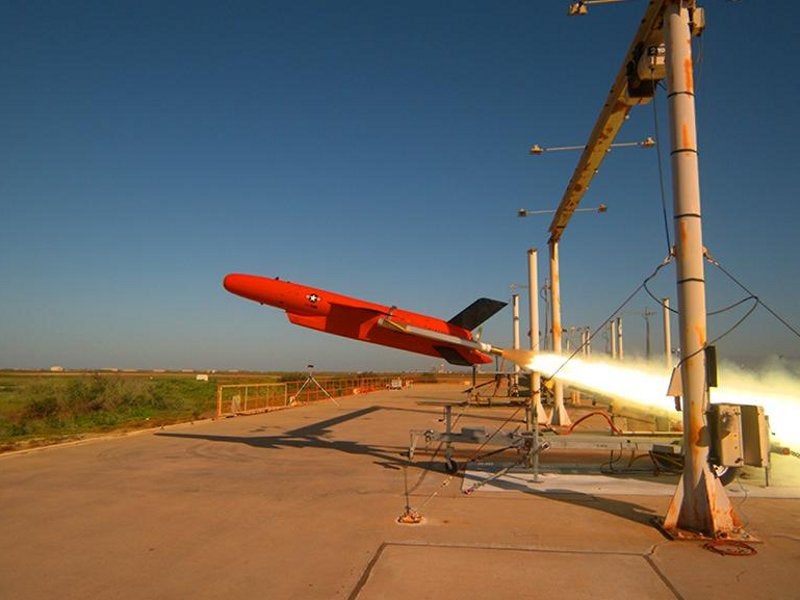On August 28, the US Navy’s next-generation subsonic aerial target achieved full operational capability during a joint maritime exercise in the Philippine Sea, marking the first time the BQM-177A was employed in the Western Pacific region.
The target drone, the BQM-177A, is a recoverable aerial target device representing sophisticated subsonic anti-ship cruise missile threats. It is intended to put shipboard air defense systems to the test.
The trial took place on august 28 during the Pacific Vanguard 2022 (PV 22) quadrilateral Standard Missile (SM) 2 exercise in the Philippine Sea.

PV 22-1 is the fifth edition of the quadrilateral exercise series between naval forces from Australia, Japan, the Republic of Korea, and the United States.
“It is unmatched in its performance capabilities when it comes to delivering realistic anti-ship missile threat emulation,” program managers at Naval Air Systems Command said.
During the exercise, the target drones were fired from the Lewis and Clark-class dry cargo ship USNS Alan Shepard (T-AKE 3). The missiles were then fired from the US Navy’s Arleigh Burke-class guided-missile destroyer USS Barry (DDG 52) and the Royal Australian Navy’s (RAN) Anzac-class frigate HMAS Perth (FFH 157).
The BQM-177A target drones successfully engaged the missiles after launch, achieving the FOC milestone.
“Not only am I glad the [Task Force] 71 team was the first to have a successful missile launch against a brand-new type of target drone, but I am extremely grateful that we got to do it side by side with our allies and partners in the region,” Task Force 71 commander Capt. Walter Mainor stated.
BQM-177A Subsonic Aerial Target
Kratos Defense & Security Solutions, a US-based supplier of cutting-edge technical solutions for the armed services of the US and its allies, devised and produced the advanced, high-subsonic, recoverable aerial target system BQM-177A.
The unmanned system is intended to meet the US Air Force and US Navy’s needs for weapons-release training. The BQM-177A target’s main objective is to simulate hostile anti-ship cruise missiles in the real world. The plane can train navy aviators to evaluate and test new weaponry during air-to-air combat operations.
The BQM-177A is a derivative of the BQM-167A Skeeter target system currently used by the US Air Force. The new target was chosen as the preferred option for the Subsonic Aerial Target (SSAT) program of the US Navy due to its high subsonic and enhanced sea-skimming capabilities. It will take the place of the BQM-74E Chukar recoverable targets used by the US Navy.
In June 2018, the US Navy received the first aerial target as a part of a low-rate initial production Lot 1 (LRIP1). The first developmental testing operations on the target began in July 2018.
BQM-177A is made of cutting-edge materials and has a flexible design. Its high-mounted main wings are swept backward to boost aerodynamic performance, and the tail structure is set up traditionally with rearward swept horizontal stabilizers.

The system is 5.18 meters long, one meter in height, and 2.13 meters wide. With a dry weight of 281.22 kilograms, it can accommodate payloads inside its fuselage that weigh up to 45.35 kilograms and in each wingtip that weigh up to 38.55 kilograms.
The target system is launched using a rocket-assisted take-off system, and its recovery from either land or water is accomplished using a parachute recovery system.
The target can be launched manually or automatically. The operator controls the vehicle in manual mode, whereas in autonomous mode, the vehicle is guided by pre-programmed flight maps. The BQM-177A target can be utilized for multiple flights.
The BQM-177A aerial target can carry various payloads, including active and passive radar augmentation, electronic countermeasure systems, internal chaff, flare dispensing systems, threat emitter simulators, smoke generators, scoring systems, power management systems, and an infrared system.
Additionally, it has a friend-or-foe identification transponder device that identifies potential enemies. The operators can simultaneously command up to eight airborne targets owing to an onboard command and control system.
The TR 60-5 turbojet engine, which can produce 1,000lb of thrust, powers the BQM-177A. The unmanned target system can travel at a top speed of 0.95 Mach. It can function at 3.1 meters above ground level (AGL), and 12,192 meters above mean sea level (MSL).
It can carry out sea-skimming threat emulation at altitudes as low as 3.1 meters. The BQM-177i, or export version, of the BQM-177A aerial target is designed for export purposes. It features a similar design configuration to its base version and is a challenging target for firing training.
- Contact the author at ashishmichel@gmail.com
- Follow EurAsian Times on Google News




